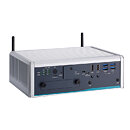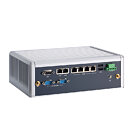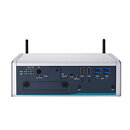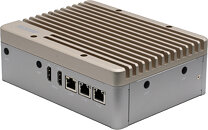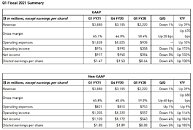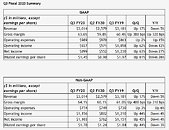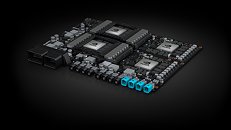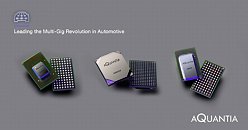Axiomtek Introduces AIE110-XNX Edge AI Developer Kit
Axiomtek - a world-renowned leader relentlessly devoted to the research, development, and manufacture of series of innovative and reliable industrial computer products of high efficiency - is pleased to introduce the AIE110-XNX, its new edge AI developer kit powered by the NVIDIA Jetson Xavier NX platform which features 6-core NVIDIA Carmel ARM v8.2 64-bit CPU delivering up to 21 TOPS of accelerated AI computing performance and integrates an advanced 384-core NVIDIA Volta GPU with 48 Tensor Cores. Aimed to save effort on system integration and reduce complexity for embedded developers, the AIE110-XNX enables users to develop AI solutions on a friendly budget with no limit of minimum order. The palm-sized edge AI developer kit is ideal for makers, learners, and system integrators to build more AI innovation with little effort.
"The AI boom is happening all over the world, and it is now available for everyone. Catching the AI wave with faster responding and more efficiency, Axiomtek's AIE110-XNX can be quickly engaged to be the AIE100-903-FL-NX for smart city, the IP67-rated AIE800-904-FL for outdoor edge AI applications, the AIE900-XNX for robotics and AMR or self-service kiosk applications. It can also be flexibly transitioned to a new generation platform with upgraded AI performance such as NVIDIA Jetson Orin NX, NVIDIA Jetson Orin Nano, and more," said Annie Fu, a Product Manager of the AIoT Team at Axiomtek. "In addition, the AIE110-XNX has reserved mounting holes on the bracket, which helps system integrators to easily start development right out of the box."
"The AI boom is happening all over the world, and it is now available for everyone. Catching the AI wave with faster responding and more efficiency, Axiomtek's AIE110-XNX can be quickly engaged to be the AIE100-903-FL-NX for smart city, the IP67-rated AIE800-904-FL for outdoor edge AI applications, the AIE900-XNX for robotics and AMR or self-service kiosk applications. It can also be flexibly transitioned to a new generation platform with upgraded AI performance such as NVIDIA Jetson Orin NX, NVIDIA Jetson Orin Nano, and more," said Annie Fu, a Product Manager of the AIoT Team at Axiomtek. "In addition, the AIE110-XNX has reserved mounting holes on the bracket, which helps system integrators to easily start development right out of the box."








